115 Years, 115 Impactful Moments
Click to play USC Viterbi's 115th anniversary trivia game
 In 1905, USC offered its very first engineering courses out of the physics and mathematics departments.
In 1905, USC offered its very first engineering courses out of the physics and mathematics departments.
One hundred and fifteen years later, the USC Viterbi School of Engineering has a name and a host of accomplishments over the ensuing 11.5 decades.
This past May, Dean Yannis Yortsos, working with USC Viterbi vice deans, chairs, and select senior faculty, sought to identify 115 amazing USC Viterbi accomplishments by faculty, students and alumni over that span of time. This list would span all eight departments, the famed USC Information Sciences Institute and various programs of the school.
This list, like many of its kind, suffers from a clear recency bias. It is by no means the definitive list of all the USC Viterbi School’s noteworthy accomplishments! However, despite these limitations, perhaps it will serve as a helpful primer on what George Bekey, USC Viterbi professor emeritus, once called the school’s “remarkable trajectory.”
Test your knowledge of these USC Viterbi “wins” in a “Who Wants To be A Millionaire”-style interactive game above.
Or, for those who prefer to dive right in…the full list of 115 accomplishments for 115 years awaits.
2001-2020

In 2009 USC Viterbi co-creates and launches the National Academy of Engineering Global Grand Challenges Scholars Program, a new education model to prepare engineers to be world changers.
The program has since been implemented at more than 122 universities in the United States and 33 overseas.

In 2015, USC Viterbi is ranked #1 by U.S. News and World Report in its list of graduate engineering programs with the most women.
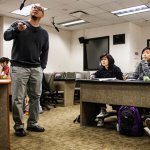
USC Viterbi's Distance Education Network (DEN) is ranked #1 for online graduate engineering programs by U.S. News and World Report in the inaugural rankings (2013) and again as recently as 2017.
The program, building on its nearly 50 year history, remains among the most distinguished in the nation.

In 2016, USC Viterbi is named best online graduate engineering program for veterans by U.S. News and World Report.
This is bolstered in 2014 by a partnership with the Pentagon for graduate programs for Army officers. USC Viterbi also offers an unlimited number of Yellow Ribbon awards to eligible military candidates.

USC Viterbi's iPodia's program launches in 2009 – a global partnership for shared learning with 13 universities on four different continents.
Also in 2009, USC Viterbi opens its Shanghai office, followed by the India Office in 2011.

In 2003, the Center for Interactive Smart Oilfield Technologies (CiSoft) is established as one of the school's most successful industry-sponsored research centers.
This collaborative research center with support from Chevron has produced more than 100 Ph.D. students and with funding exceeding $45 million.

In 2008, USC trustee and alumnus Andrew J. Viterbi recieved the National Medal for Science.
The highest honor bestowed by the United States for scientific innovation was also given to USC Viterbi professors Solomon Golomb in 2013 and Mark Humayun in 2016.

In 2009, Dean Yannis Yortsos coins the term Engineering+, a concept promoting interdisciplinary research, programs and faculty appointments that enable engineering’s powerful role for innovation in the sciences and the professions.

In 2010, USC Viterbi hosts the second ever NAE Grand Challenges Summit.
The event, to promote society’s most pressing challenges, has nearly 1000 attendees and over 50 engineering deans.

The USC-Lockheed Martin Quantum Computing Center (QCC), led by USC professor Daniel Lidar and ISI’s Robert F. Lucas, launches in 2012. Utilizing the world’s first commercial adiabatic quantum processor, the D-Wave One, USC remains the only university in the world to be hosting and operating a commercial quantum system.

The first commercial space vehicle is launched by Space Exploration Technologies (SpaceX) in 2010, carrying a communications nano-satellite developed in part by ISI and its Space Engineering Research Center (SERC).
Similarly, in 2012, a nano-satellite designed and built at ISI and USC is launched successfully.

Quantum researcher Federico Spedalieri of ISI witnesses the “entanglement effect” in 2014, demonstrating that the D-Wave system is actually performing quantum processing.

ISI partners with UC Berkeley on Cyber Defense Technology Experimental Research (DETER) in 2004, a major cybersecurity testbed.
Led by ISI’s Terry Benzel, DETER has spun off three innovative new testbeds, three international partner testbeds, and won a DHS Award in 2017.

Pegasus software, whose development is led by ISI's Ewa Deelman, is instrumental in detecting gravitational waves in 2016, contributing to a Nobel Prize.
The long-awaited discovery, predicted by Einstein’s Theory of Relativity and made by Laser Interferometer Gravitational-Wave Observatory physicists, is among hundreds of projects and millions of workflows managed with Pegasus.

In 2016, alumna Lt. General Stayce D. Harris becomes the first African American woman to receive the rank of three star general in the U.S. Air Force.
Lt. Gen Harris served as Inspector General of the Air Force and in 2019 received the Institute of Industrial and Systems Engineering (IISE) Captains of Industry Award.

In 1999 and 2003, the Daniel J. Epstein Department of Industrial and Systems Engineering establishes two nationally-funded interdisciplinary research centers, the National Center for Metropolitan Transportation Research (METRANS), and the Center for Risk and Economic analysis of Terrorism Events (CREATE).
CREATE becomes the Department of Homeland Security’s first University Center of Excellence.

In 2006, The History Channel selects Berok Khoshnevis' Contour Crafting method of robotic 3-D printed construction as one of its top 25 inventions for the network's Modern Marvels program.
The technology was selected from over 4000 candidates by The History Channel and the National Inventors Hall of Fame.

In 2018, alumna Wanda Austin becomes the first female and first African American president of USC.
She previously served as CEO of the Aerospace Corporation and as a research faculty member in the Daniel J. Epstein Department of Industrial and Systems Engineering. In 2015 she was selected by President Barack Obama to serve on the President’s Council of Advisors on Science and Technology.

Three USC Viterbi professors have received the Presidential Award for Excellence in Science, Mathematics, and Engineering Mentoring, established by the White House in 1995:
Maja Matarić, a pioneer of socially assistive robotics (2011); John Slaughter, noted for his education research in diversity and inclusion (2012); and Gigi Ragusa, whose research interests include engineering education and innovation and college access for first-generation college students (2019).

In November 2017, the John D. O’Brien Nanofabrication Lab, a world class "machine shop for nanotechnology" is dedicated to the memory of the school's first executive vice dean, who passed away earlier that year.
Enabled by an anonymous gift, the facility gives students and faculty the ability to develop novel biomedical diagnostic and implantable devices.

Since 2009, USC Viterbi faculty and doctoral students have won 14 MIT TR35 Awards.
The prize honors the world’s top innovators under 35 whose technical work promises to shape the coming decades. Ten of these winners are female engineers.
Click to view the TR35 Honorees

In 2016, the Min Family Challenge (MFC) is established through an endowment by alumnus Bryan Min and his wife, Julie Min, to place USC Viterbi students at the epicenter of the world’s most pressing issues.
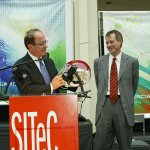
In 2004, with a donation by trustee Mark Stevens, USC Viterbi establishes what is today known as the Stevens Institute for Innovation — the largest naming gift to establish a technology commercialization institute at an engineering school.

USC Viterbi was selected by the National Science Foundation in 2014 to lead a regional hub for start-ups in Southern California: Innovation Node-Los Angeles.
At the time, it was one of only seven such designated sites in the United States, building on USC Viterbi entrepreneurial strength represented by MEPC, Startup Garage, and the Min Family Challenge.

The Maseeh Entrepreneurship Prize Competition (MEPC) becomes one of the first business plan competitions at an engineering school in 2010 after an endowment from entrepreneur Fariborz Maseeh.
Second Spectrum, the 2013 victor, is currently the official tracking and analytics provider for the NBA, MLS and Premier League.

In 2019, the incoming undergraduate engineering class was fifty percent women.
A historic first for engineering at USC, the school also had nearly 2,000 women enrolled in its master’s and doctoral programs in 2019, leading the nation.

In 2009, then President Barack Obama nominated Charles F. Bolden Jr. as NASA administrator.
The former astronaut, retired Marine general, and USC Viterbi alumnus became the first African American to hold this position.

USC’s Women in Science and Engineering (WiSE) Program is established in 2000.
The program has facilitated the hiring and development of 37 tenure-track and tenured women in engineering. In 2005, Women in Engineering (WIE) was established to provide professional and academic services to female students of the USC Viterbi School.

In 2017, the American Society for Engineering Education (ASEE) honored USC Viterbi with the prestigious President’s Award.
Presented to Dean Yannis Yortsos for his efforts in creating the ASEE’s Deans Diversity Pledge, which by then numbered 210 signatory schools. In 2016, Dr. Brandi Jones became USC Viterbi’s first vice dean for diversity and strategic initiatives.

In 2009, Professor Costas Sioutas and his team played an integral role in in saving Leonardo Da Vinci’s masterpiece, “The Last Supper,” from Milan’s air pollution by developing state-of-the-art aerosol technologies to assess the toxicity of particulate matter air pollution.

Launched in July 2010, Ming Hsieh's second transformative gift established the Ming Hsieh Institute for Research on Engineering-Medicine for Cancer, fueling a revolutionary collaboration between the USC Viterbi School and the Keck School of Medicine of USC.
The gift created a permanent endowment to support collaborative research in the field of nanomedicine for cancer.

Ronald Tutor Hall, a “home” for engineering undergraduates, opens in 2005. The six-story, state-of-the-art facility houses all student services and student organizations.

With its fountains, statue of Neil Armstrong and outdoor meeting spaces, the Epstein Family Engineering Plaza (formerly Archimedes Plaza), completed in 2014, is a central gathering place for faculty, students and staff.
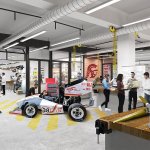
The Baum Family Maker Space is established in summer 2020 for undergraduate student invention.
This new facility positions USC Viterbi as a leader in hands-on engineering learning for students.

In 2019, USC Viterbi concluded its ambitious $500 million fundraising initiative (officially launched in 2013), resulting in widespread impact to the school, including 58 new endowed scholarships, 19 endowed faculty positions.
This came on the heels of the $300 million “Destination: The Future” initiative (2001-2008) that named the school and half of its departments.

Historic naming gifts - USC Viterbi is the first U.S. engineering school with four named departments:
The Daniel J. Epstein Department of Industrial and Systems Engineering (2002), the first named department at USC; the Mork Family Department of Chemical Engineering and Materials Science (2005); the Ming Hsieh Department of Electrical and Computer Engineering (2006); and the Sonny Astani Department of Civil and Environmental Engineering (2007).
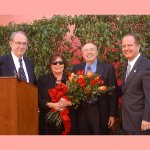
In 2004, the USC School of Engineering is renamed as the USC Andrew and Erna Viterbi School of Engineering.
The gift — the largest ever to an existing school of engineering — is from from Andrew J. Viterbi, ’62, who co-founded wireless technology company Qualcomm, and his wife, Erna.

In January 2014, a new epicenter for convergent biosciences is revealed at USC.
The first gift, from Gary and Alya Michelson, established the Michelson Center for Convergent Bioscience (the largest building on the University Park Campus). Six years later, Allen and Charlotte Ginsberg’s donation established the Dr. Allen and Charlotte Ginsburg Human-Centered Computation Building, designed to also house the Department of Computer Science. These two visionary gifts build upon the wet labs in nearby Irani Hall to form a “Convergence Plaza,” where engineers, scientists and doctors can come together to tackle the most pressing issues in healthcare.

In 2019, USC computer science students continued their winning streak in the International Collegiate Programming Contest.
The students won first place over ninety regional teams including CalTech, UCLA, UCSD, and Harvey Mudd, winning what has become known as “the programming Olympics” a total of six times in the last ten years.

In 2020, USC computer science earned the top spot in the U.S. News & World Report (USNWR) rankings for best online master’s programs in information technology for the eighth consecutive year, while USC Viterbi graduate programs consistently ranked in the top 10 in the USNWR.

Milind Tambe pioneers “AI for Good,” using AI to protect U.S. ports, airports and infrastructure from terrorists. The technology was also used as part of the largest global deployment of predictive AI to thwart poachers and protect endangered animals.

Now debuting at the Smithsonian, the New Dimensions in Testimony at ICT, in partnership with USC Shoah, is the world’s first ever re-creation of interactive, 3D avatars of Holocaust survivors for future generations.

An internationally renowned theoretical computer scientist, Shanghua Teng twice received prestigious ACM Gödel Prizes, in 2008 and 2015, for his work in smoothed analysis of algorithms and nearly-linear-time Laplacian solvers.

Movie magic! In 2010, Paul Debevec received an Academy of Motion Picture Arts and Sciences Scientific and Engineering Academy Award for creation of photoreal digital actors. In 2017, alumnus Parag Havaldar (Ph.D. ’96), who still teaches part-time at USC, won an Academy of Motion Pictures Arts and Sciences Award for Technical Achievement.

USC Games, a joint initiative between the USC Viterbi School of Engineering and the USC School of Cinematic Arts, has been recognized as the No. 1 games program in North America since 2009 (Princeton Review).

After 25 years of research, Mark Humayun’s Argus 2 device became in 2013 the first FDA approved artificial retina in the United States to restore sight to the blind.

In 2011, Professor Ted Berger’s brain implant became the first medical device in the world to restore lost memory function and strengthen recall. The MIT Technology Review later named it as one of the “10 Breakthrough Technologies of 2013.”

In 2009, USC became the first and only university to offer bachelor, master and doctorate degrees in astronautical engineering.

In April 2019, the USC Rocket Propulsion Laboratory, became the first student group to launch and recover the world’s first entirely student-designed and fabricated rocket into outer space.
Traveler IV reached 340,000 feet and set the student world altitude record.
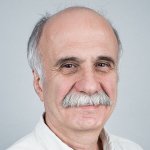
Professor Mike Gruntman was a member of the IBEX spacecraft team that in 2008, for the very first time, mapped the interstellar frontier of the solar system.

Twelve USC Viterbi alumni have journeyed beyond Earth’s atmosphere as NASA astronauts.
These include: Charlie Bolden, former NASA administrator, who flew on four space shuttle missions; and Nancy Currie-Gregg, who flew in four space shuttle missions, accruing 1,000 hours in space. In addition, Professor Garett Reisman spent 95 days aboard the International Space Station after which he returned to Earth aboard the Space Shuttle Discovery in 2008. Professor Paul Ronney, now AME department chair, was selected as an alternate payload specialist astronaut. His experiments flew on two Columbia Space Shuttle missions in 1997 (the mission he was backup for) and one in 2003.
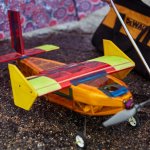
The USC AeroDesign Team won the AIAA Design/Build/Fly competition in 1998, 2014, 2017, and 2020.
It also won best report three years in a row (2018, 2019, 2020). The contest is an annual opportunity for student teams to design, build and demo the flight capabilities of an unmanned, electric powered, radio controlled aircraft, specific to a particular mission profile released by the AIAA each year.

The Center for Advanced Manufacturing launched on February 24, 2017.
The 6,000-square-foot center just off the University Park campus houses the latest technologies and fosters innovative research aimed at advancing additive manufacturing, digital manufacturing, automation and smart manufacturing. A recent project aimed at COVID-19 is a disinfection robot named ADAMMS.



